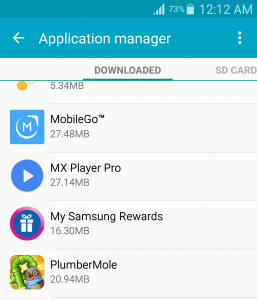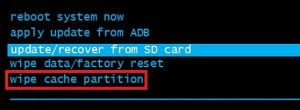Fix: Note 4 wont turn on
When it came out, Samsung Galaxy Note 4 was one of the most powerful Android devices on the market. Even though other flagships managed to beat it’s processing power, the elegant design still convinces a lot of people to invest in a Note 4. But all the specifications in the world coupled with the sexiest design curves won’t manage to calm you down if the device is refusing to power up.
Unfortunately for Samsung, a lot of people are experiencing abnormal behaviors with their Note 4’s. Users have reported either that the phone suddenly turns off and refuses to power on again or it gets increasingly laggy with frequent freezes, before becoming totally unresponsive. Another known issue with the Note 4 is the occasional freeze when performing a factory reset, in which the user has no other way but to take out the battery in the middle of the resetting process – often times this will render your device unable to boot in normal mode.
Another known issue with the Note 4 is the occasional freeze when performing a factory reset, in which the user has no other way but to force a restart in the middle of the resetting process – often times this will render your device unable to boot in normal mode.
The issue can originate from a lot of different places. Here are some common culprits that will prevent your Note 4 from turning on:
- software conflict
- bad battery
- glitched OS
- faulty motherboard – this is a widespread issue. Back in 2014 when Note 4 launched, Samsung was way behind honoring repair requests mainly due to faulty motherboards that broke down during the first weeks of use.
- broken charger
- bad micro-USB charging port
To fix your Note 4 device, first, you need to identify what is causing the problem. I will provide you with a complete guide full of potential fixes coupled with troubleshooting practices. Of course, I can’t guarantee the methods below will work for all of you because the issue might be related to a serious hardware failure, in which case you need to send it for a repair.
If you don’t want to wait for weeks before you get your device back from the service, it’s worth a shot to follow through with the fixes below. All the methods are 100% safe and won’t bring any further damage to your device. Make sure you go through each one in order until you find a solution that works for you.
Method 1: Plugging the phone into a different charger
Let’s start by ruling out the possibility of a faulty charger. This will help us pinpoint if the device is suffering from a hardware issue.
- Start by connecting your Note 4 with the original charger and USB cable. Plug it in and check if the charging indicators (pulsating LED and battery icon on the screen) are showing up.

- Whether it shows like it’s charging or not, let it plugged in for at least 10 minutes before attempting turning it on again.
- If it doesn’t charge, use a different charger and USB cable and see whether you get a response. You can also plug it in with your computer and see if it shows signs of charging.
Method 2: Cleaning the micro-USB port
If your device didn’t show signs of charging after performing the steps above, let’s make sure there isn’t any foreign object that is blocking the micro-USB port. If you use to carry your Note 4 in your pocket too much, the charging port might suffer from lint/dirt accumulation. This can hinder the transfer of electricity and prevent your smartphone from charging. Here’s what you need to do:
- Use a flashlight to take a look inside the micro-USB port and see if you can spot anything that shouldn’t be there.
- Make sure your device is powered off and use a small pair of tweezers, a needle or toothpick to drag any lint out of the port.

- Dip a small cotton swab in rubbing alcohol, insert it into the charging port and rotate it so that you get any of the remaining dirt out.
- Let it dry for at least 2 hours before attempting to power up again.
Method 3: Performing a soft reset
The following method is very effective in solving firmware-related glitches. In some cases, it can successfully restore some hardware functionality. If you are experiencing a black screen but you can still see the LED lighting up and you’re able to hear texts or phone calls coming in, there’s a high chance the following fix will help you.
In a nutshell, a soft reset is a reboot that does a little more. Aside from the standard reboot, this method drains the stored electricity from your device’s components and refreshes the memory. Sometimes, clearing up the capacitors is enough to make your phone’s screen turn on again.
Keep in mind that this is one of the safest procedures you could do. You won’t loose any of your data or apps. The only things that are deleted are cached app data and temporary files that your OS created. Here’s what you need to do:
- Remove the back plate from your Galaxy Note 4.
- Remove your phone’s battery.
- With the battery removed, hold down the Power button for 2-3 minutes (this will ensure no electricity is stored inside your device’s components).
- After that period has passed, pop the battery back into place.
- Attempt to turn your phone on again.
Method 4: Booting up in Safe Mode
If you’re without results until now, let’s eliminate the possibility of a software conflict. Let’s assume some of the apps you recently downloaded is causing the problem. To find out if that’s true, we will try to boot your Note 4 in Safe Mode.
When booting in Safe Mode, your device will only run the preloaded apps, so any 3rd party app you installed won’t be able instantiated. Let’s see if an app is responsible:
- Turn off your phone completely.
- Press and hold the Power button + the Volume Down button at the same time.
- After the Samsung splash screen disappears, let go of the Power button but continue holding the Volume Down key until Note 4 restarts again.
- Release the Volume Down button when your phone has finished booting up and you can see the Safe Mode icon in the bottom left corner of the screen.

If you were able to boot up (and you previously couldn’t), it’s clear that you have a software conflict. Now you need to take a methodical approach towards uninstalling every app you recently downloaded. If you downloaded APKs from outside Google Play that needed you to enable Unknown sources from the Security tab, you should probably start with them.
- Go to Settings > Application manager > Downloaded.

- Tap on the app you wish to uninstall.
- Tap Uninstall and hit OK to confirm.
- Repeat the procedure with every app you think might be responsible for the software conflict.
Method 5: Booting in Recovery Mode
If nothing so far managed to bring your device back to life, either this works or you have to return it or take it to a professional for a repair. We will attempt to boot your Note 4 into Recovery Mode and do a “wipe cache partition” followed by a master reset (factory reset).
If your phone manages to boot into Recovery Mode, it means the hardware is still intact and you’ll probably get away with just an OS reflash. Just keep in mind that a master reset restores the original factory settings. This means all your personal data aside from the data present on the SIM card and SD card will be gone. Here’s what you need to do:
- Turn your device off.
- Hold down Volume up button + Home button + power button at the same time.
- When you feel the phone vibrate, release the Power and Home buttons but continue holding the Volume Up key.
- Release the Volume up button when you see the Android System Recovery menu.

- Use the Volume down button to navigate downwards and highlight “wipe cache partition”.

- Press the Power button to select the entry, then press it again to confirm.
- Wait until the cache partition is cleared. Your device will automatically reboot.
- If your phone manages to boot up after this, your problem is solved. If not, use steps 1 to 4 to return to Recovery Mode.
- Use the volume keys again to navigate downwards and select “wipe data/factory reset”

- Hit the Power button to select the entry, then highlight Yes with the volume keys.
- Hit the Power button again to start the master reset.
- When the process is complete you’ll see that “Reboot system now” is highlighted. Press the Power button again to restart your device.